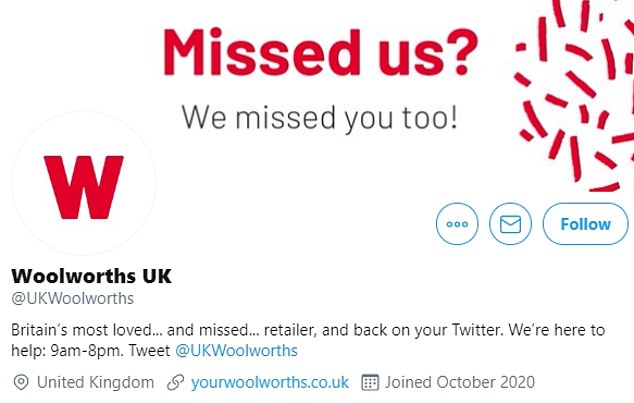Woolies-gate reveals pressure journalists are under to be first with the news
Paul Beadle considers the implications for media of the recent reporting of a Twitter account that claimed long-departed retail chain Woolworths was set for a comeback
Last week the Twitter account @UKWoolworths announced the former retail giant was heading back to UK high streets with the message: “Missed us? We missed you too!”
Driven by a heady rush of pick ‘n’ mix nostalgia and a clear desire for good news ahead of a Christmas potentially curtailed by coronavirus, thousands of people started to share the tweets.

Mainstream media titles quickly followed suit reporting the story online, including the Daily Mirror and the Daily Mail. However just as quickly, other outlets were calling it a hoax. Tom Witherow, the Daily Mail’s business correspondent tweeted that Very, which now owns the defunct brand, knew nothing about Woolies returning.
Witherow also asked: “Surely a story based on a Twitter account with 900 followers (and spelling mistakes) should be verified?” His tweet featured a screenshot of some of the media that had run the story, including his own paper.
The Guardian eventually reported that it was all a hoax, a project by a 17-year-old sixth form student for the digital marketing component of their Business A-level. The student from York claimed the spread of the story was primarily due to media coverage, rather than social media.
He told the Guardian: “Fake news is so easy to spread, and it took Twitter over 12 hours to shut down the account. There was spelling mistakes and a lack of a website purposely injected into the account, and yet some of the media still took it as gospel. I feel bad for the reporters.”
You have wonder whether people on social media, increasingly a place of anger and gloom, were more ready to dismiss such good news than their counterparts in the traditional media
Media editor at The Guardian, Jim Waterson, who spoke to the student, tweeted his own article, which then attracted responses from some of the journalists who had run the original story, offering a fascinating insight into modern online journalism.
James Andrews, money journalist at the Daily Mirror, explained some of the pressure his team was under, writing on Waterson’s Twitter thread: “The thing is the pressure to be first isn’t just internal. There’s a premium for it on both Google and Facebook. In my case we got a line up, put calls in, wrote background while we were waiting for call backs.”

So, what does this all tell us about the state of the media today? And by media I am lumping social media and traditional media in together. Because at best they are complementary of each other, creating a seamless flow of news and information. At worst it shows that information can bounce around the echo chamber and cling to whatever narrative or rationale an individual wants to use.
Although the Woolworths story isn’t as potentially dangerous as conspiracy theories about COVID-19 and 5G, or as flimsy as a gossip story about which reality TV star has unfollowed another on Instagram, this episode shows that the media are watching social platforms like hawks for any kind of hook, and they can, unwittingly or not, publish stories that are ultimately untrue.
It also reveals the algorithmic influence that social media and search engine giants now have over the way traditional media find and promote their stories to reach as big an audience as possible.
As a PR agency, MRM numbers many ex-journalists in it ranks and we all usually trot out the hackneyed “wouldn’t have happened in my day” phrase when we see unverified, flimsy or just plain inaccurate stories.
At the same time, as PRs we also know the pressure that journalists are under to get fresh stories, particularly online. This in turn puts even more emphasis on us to check out media enquiries quickly and accurately with our clients and be robust with any denials or clarifications in response to the journalist.
But crucially, I think this incident also shows companies the importance of being open, honest and truthful, more than ever before. If a company has made a mistake or done something wrong, don’t try to cover it up or deny it, work with your communications consultant to create a response that provides explanation, context and, if need be, an apology.
News moves so quickly and the pressure to publish is huge, so any delay or equivocation is likely to result in worse coverage than if you came clean from the off.
It’s also worth remembering that the old saying “today’s news is tomorrow’s fish and chip papers” doesn’t hold true anymore. While the need to satisfy the hunger of 24 rolling news and online media means that journalists quickly move from one story another, it also means those nuggets of information about you and your brand – whether true or not – are only ever a few Google searches away.
